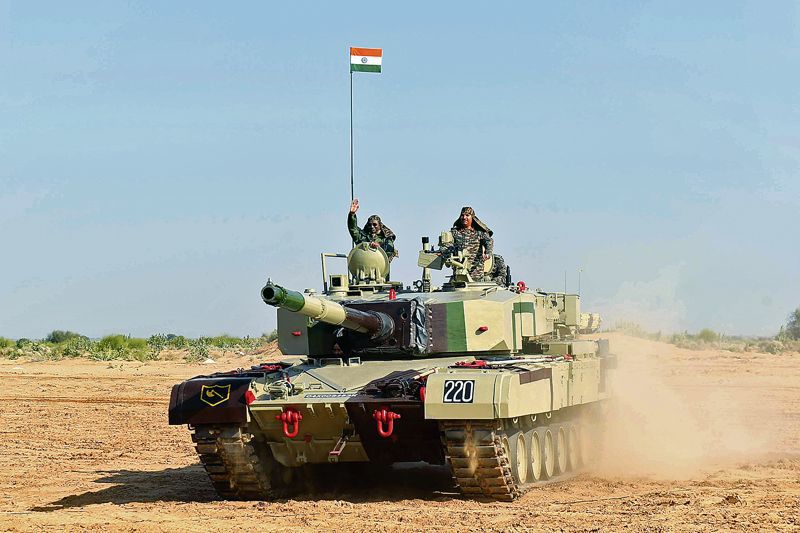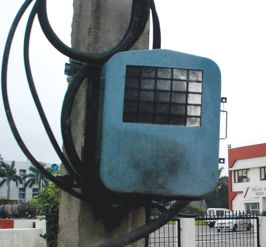
Note of caution: Make-believe can prove to be dangerous in national security matters. ANI
C Uday Bhaskar
Director, Society for Policy Studies
THE defence allocation in the interim Budget for the 2024-25 financial year is Rs 6.21 lakh crore (around $75 billion). This has been described by the Ministry of Defence (MoD) as a record allocation. The MoD’s press release says that this amount is 4.72 per cent more than what had been budgeted in the 2023-24 financial year, even as Rs 1.72 lakh crore (which amounts to 27.67 per cent of the defence budget) has been allocated for capital expenditure — a critical component for modernisation of the military inventory.
Parliamentarians have drawn attention to the high level of obsolescence in the Indian military inventory.
Putting these figures in context, India plans to acquire 31 MQ-9B armed drones from America’s General Atomics Aeronautical Systems at an estimated cost of $4 billion. This amounts to a whopping Rs 33,000 crore and the payment will be spread out over an agreed time period of a few years.
For any nation, investing in its defence preparedness in an adequate and sustainable manner is a complex and costly process. There are many indicators to assess the defence allocation. The guiding tenet is that each nation and its elected government (in democracies) or the elite in power (in authoritarian regimes) decide how much they are willing to spend on their military capabilities. The total amount as a percentage of the GDP is a useful benchmark.
In 2022, this ratio for major nations varied from 0.6 per cent in the case of Indonesia to 7.4 per cent of the GDP for Saudi Arabia, according to the Stockholm International Peace Research Institute (SIPRI). India was estimated to have spent 2.4 per cent of the GDP for military purposes. This amounted to $81.4 billion. On the SIPRI list, India was fourth after the US ($877 billion), China ($292 billion) and Russia ($86.4 billion).
The allocation for the border-guarding Central police forces are not included in the defence budget (they are under the purview of the Home Ministry). Hence, the actual allocation to the Indian defence establishment, comprising the three armed forces, the Coast Guard, the Defence Research and Development Organisation and the defence PSUs and factories, is different from the SIPRI figure.
Against this backdrop, a more granular reading of the current defence allocation draws attention to structural trends of the last decade that present a not-so-rosy picture of India’s defence spend.
The current Budget estimate (BE) for 2024-25 is an increase of under 5 per cent over the BE of 2023-24, but it may not even compensate for inflation. To that extent, this could be seen as an interim, standstill allocation till the next government assumes office later this year.
However, what is more problematic is the pattern of defence allocation in relation to the GDP. As per a PRS Legislative Research report, in FY 2023-24, this figure was 1.97 per cent; in the current year, it is estimated to be 1.9 per cent. It merits recall that in 2018, the Standing Committee on Defence had recommended that the MoD should be allocated a fixed budget of about 3 per cent of the GDP to ensure adequate preparedness of the armed forces, but this recommendation has not been accepted by the government.
The first trendline of the last decade is that defence spending, which was about 2.2 per cent of the GDP in 2013-14, has gradually come down (barring a spike in one year to cater to the OROP and bunched payments, delayed due to the Covid-19 pandemic) to below 2 per cent. Considering the political priorities, it is unlikely that this figure will increase in any meaningful and significant manner.
How does this affect the modernisation of the military inventory, which in turn determines the combat proficiency of the Indian fauj? The capital component of the BE is a good indicator and here again the trendline is not encouraging.
The current capital expenditure has been pegged at Rs 1.72 lakh crore. This figure has to be contextualised in two ways. The first is the slow decline in capital allocation. The PRS report (February 2023) notes that while this was 32 per cent of the defence budget in 2013-14, it was estimated to have come down to 29 per cent in 2023-24.
Furthermore, given that India is among the top importers of military inventory, the rupee’s value against the dollar is an indicator of how much India is actually able to buy in the global market. It was Rs 60.95 per dollar in 2014 and slid to Rs 83.1 (as on January 10, 2024). This would automatically depress the forex value of the rupee when paying for past and current acquisitions.
To their credit, parliamentarians have drawn attention to the high level of obsolescence in the Indian military inventory. In 2018, the Standing Committee on Defence cautioned that while a modern military ought to have an equal share (33.3 per cent each) of its equipment in the three categories (vintage, current and state-of-the-art), the Army had 68 per cent of its equipment in the vintage category, 24 per cent in the current one and a mere 8 per cent in the state-of-the-art category. It also noted that the Army had a substantial deficiency of weapons, stores and ammunition. And as the PRS report points out, the committee “found that adequate attention has been lacking with respect to both policy and budget for modernising the ageing armoury”, which represents a hiatus in long-term strategising.
The next government will have to address these critical gaps in higher defence policy and resource allocation if India is to deal with the many challenges it is likely to face in the near future. Make-believe can prove to be dangerous in national security matters, as the events of October 1962 demonstrated.
Join Whatsapp Channel of The Tribune for latest updates.




























